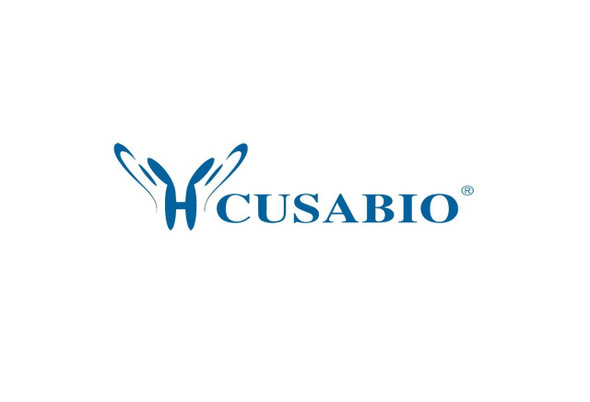Cusabio Human Recombinants
Recombinant Human Holliday junction recognition protein (HJURP) | CSB-EP010467HU
- SKU:
- CSB-EP010467HU
- Availability:
- 3 - 7 Working Days
Description
Recombinant Human Holliday junction recognition protein (HJURP) | CSB-EP010467HU | Cusabio
Alternative Name(s): 14-3-3-associated AKT substrateFetal liver-expressing gene 1 proteinUp-regulated in lung cancer 9
Gene Names: HJURP
Research Areas: Cell Cycle
Organism: Homo sapiens (Human)
AA Sequence: MLGTLRAMEGEDVEDDQLLQKLRASRRRFQRRMQRLIEKYNQPFEDTPVVQMATLTYETPQGLRIWGGRLIKERNEGEIQDSSMKPADRTDGSVQAAAWGPELPSHRTVLGADSKSGEVDATSDQEESVAWALAPAVPQSPLKNELRRKYLTQVDILLQGAEYFECAGNRAGRDVRVTPLPSLASPAVPAPGYCSRISRKSPGDPAKPASSPREWDPLHPSSTDMALVPRNDSLSLQETSSSSFLSSQPFEDDDICNVTISDLYAGMLHSMSRLLSTKPSSIISTKTFIMQNWNSRRRHRYKSRMNKTYCKGARRSQRSSKENFIPCSEPVKGTGALRDCKNVLDVSCRKTGLKLEKAFLEVNRPQIHKLDPSWKERKVTPSKYSSLIYFDSSATYNLDEENRFRTLKWLISPVKIVSRPTIRQGHGENRQREIEIRFDQLHREYCLSPRNQPRRMCLPDSWAMNMYRGGPASPGGLQGLETRRLSLPSSKAKAKSLSEAFENLGKRSLEAGRCLPKSDSSSSLPKTNPTHSATRPQQTSDLHVQGNSSGIFRKSVSPSKTLSVPDKEVPGHGRNRYDEIKEEFDKLHQKYCLKSPGQMTVPLCIGVSTDKASMEVRYQTEGFLGKLNPDPHFQGFQKLPSSPLGCRKSLLGSTAIEAPSSTCVARAITRDGTRDHQFPAKRPRLSEPQGSGRQGNSLGASDGVDNTVRPGDQGSSSQPNSEERGENTSYRMEEKSDFMLEKLETKSV
Source: E.coli
Tag Info: N-terminal 6xHis-SUMO-tagged
Expression Region: 1-748aa
Sequence Info: Full Length
MW: 99.5 kDa
Purity: Greater than 90% as determined by SDS-PAGE.
Relevance: Centromeric protein that plays a central role in the incorporation and maintenance of histone H3-like variant CENPA at centromeres. Acts as a specific chaperone for CENPA and is required for the incorporation of newly synthesized CENPA molecules into nucleosomes at replicated centromeres. Prevents CENPA-H4 tetramerization and prevents prature DNA binding by the CENPA-H4 tetramer. Directly binds Holliday junctions.
Reference: System-wide temporal characterization of the proteome and phosphoproteome of human embryonic stem cell differentiation.Rigbolt K.T., Prokhorova T.A., Akimov V., Henningsen J., Johansen P.T., Kratchmarova I., Kassem M., Mann M., Olsen J.V., Blagoev B.Sci. Signal. 4:RS3-RS3(2011)
Storage: The shelf life is related to many factors, storage state, buffer ingredients, storage temperature and the stability of the protein itself. Generally, the shelf life of liquid form is 6 months at -20?/-80?. The shelf life of lyophilized form is 12 months at -20?/-80?.
Notes: Repeated freezing and thawing is not recommended. Store working aliquots at 4? for up to one week.
Function: Centromeric protein that plays a central role in the incorporation and maintenance of histone H3-like variant CENPA at centromeres. Acts as a specific chaperone for CENPA and is required for the incorporation of newly synthesized CENPA molecules into nucleosomes at replicated centromeres. Prevents CENPA-H4 tetramerization and prevents premature DNA binding by the CENPA-H4 tetramer. Directly binds Holliday junctions.
Involvement in disease:
Subcellular Location: Nucleus, nucleolus, Chromosome, centromere
Protein Families:
Tissue Specificity: According to PubMed:17256767, highly expressed in the thymus with lower levels in the placenta, small intestine, liver, skeletal muscle, and colon. According to PubMed:17823411, highly expressed in testis, and at a relatively lower level in thymus and bone marrow. Significantly overexpressed in many lung cancer samples, compared with normal lung.
Paythway:
Form: Liquid or Lyophilized powder
Buffer: If the delivery form is liquid, the default storage buffer is Tris/PBS-based buffer, 5%-50% glycerol. If the delivery form is lyophilized powder, the buffer before lyophilization is Tris/PBS-based buffer, 6% Trehalose, pH 8.0.
Reconstitution: We recommend that this vial be briefly centrifuged prior to opening to bring the contents to the bottom. Please reconstitute protein in deionized sterile water to a concentration of 0.1-1.0 mg/mL.We recommend to add 5-50% of glycerol (final concentration) and aliquot for long-term storage at -20?/-80?. Our default final concentration of glycerol is 50%. Customers could use it as reference.
Uniprot ID: Q8NCD3
HGNC Database Link: HGNC
UniGene Database Link: UniGene
KEGG Database Link: KEGG
STRING Database Link: STRING
OMIM Database Link: OMIM









